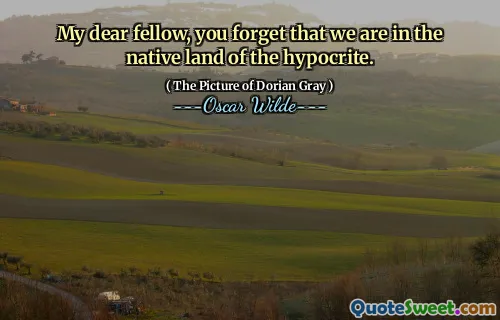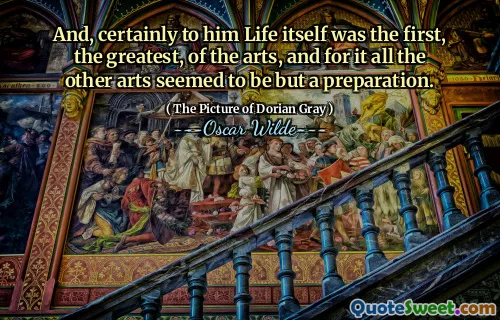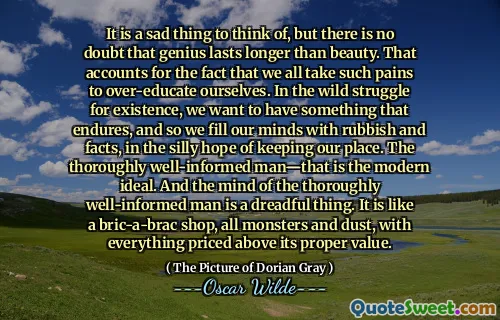"The Picture of Dorian Gray," a novel by Oscar Wilde, tells the story of a young and handsome aristocrat, Dorian Gray, who becomes enamored with his own portrait painted by Basil Hallward. When Dorian expresses a wish that he could remain young and beautiful forever while the portrait ages instead, he inadvertently sets into motion a tragic fate. The painting begins to reflect the deterioration of his soul as he indulges in a life of hedonism and moral decay, showing the consequences of his actions without altering his outward appearance.
As Dorian delves deeper into a life of excess, influenced by the cynical Lord Henry Wotton, he experiences a growing detachment from morality. His actions lead to the ruin of those around him, showcasing the impact of his selfish pursuits. The contrast between Dorian's eternal youth and the horrific changes reflected in his portrait becomes a haunting symbol of the duality of human nature, raising questions about beauty, art, and the superficiality of society.
Ultimately, the story culminates in a powerful climax, where Dorian's inability to escape his own conscience results in a dramatic reckoning. In seeking to preserve his youth, he loses his sense of self and humanity. Wilde's novel serves as a cautionary tale about the perils of vanity and the cost of living a life devoid of ethical considerations, illustrating the profound consequences of unchecked desires and the fleeting nature of beauty.
More »
Today Birthdays
1955 -
Max Lucado
1946 -
John Piper
1842 -
William James
1907 -
Abraham Joshua Heschel
1887 -
Aldo Leopold
1755 -
Alexander Hamilton
1976 -
Alethea Kontis
1971 -
Mary J. Blige
1825 -
Bayard Taylor
1943 -
Jim Hightower
1885 -
Alice Paul
1923 -
Carroll Shelby
1928 -
David L. Wolper
1954 -
Kailash Satyarthi
1972 -
Amanda Peet
1946 -
Naomi Judd
1970 -
Malcolm D. Lee
1955 -
Christian Marclay
1973 -
Rahul Dravid
1987 -
Jamie Vardy
1942 -
Clarence Clemons
1992 -
Fatima Sana Shaikh
1948 -
Larry Harvey
1930 -
Rod Taylor



